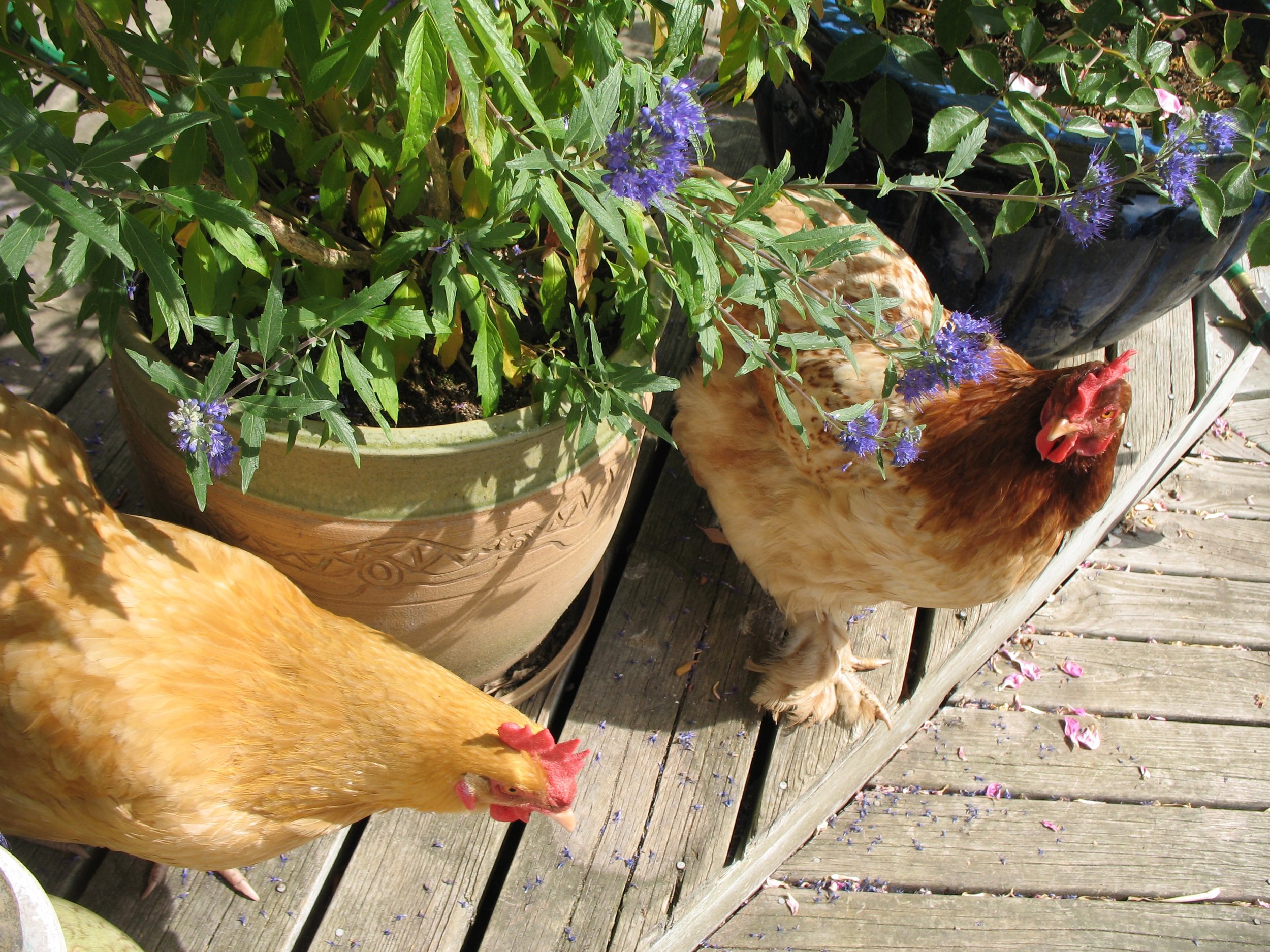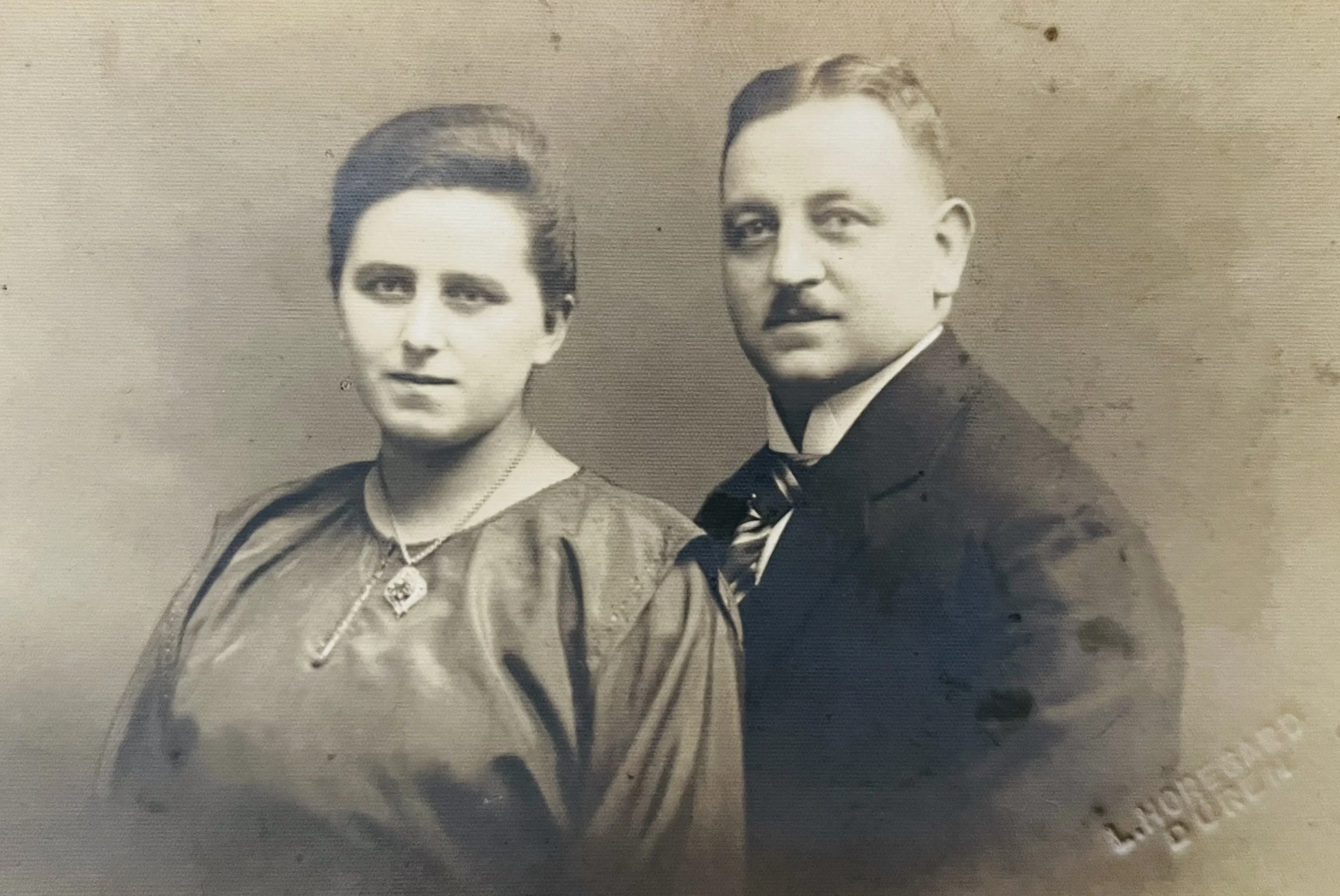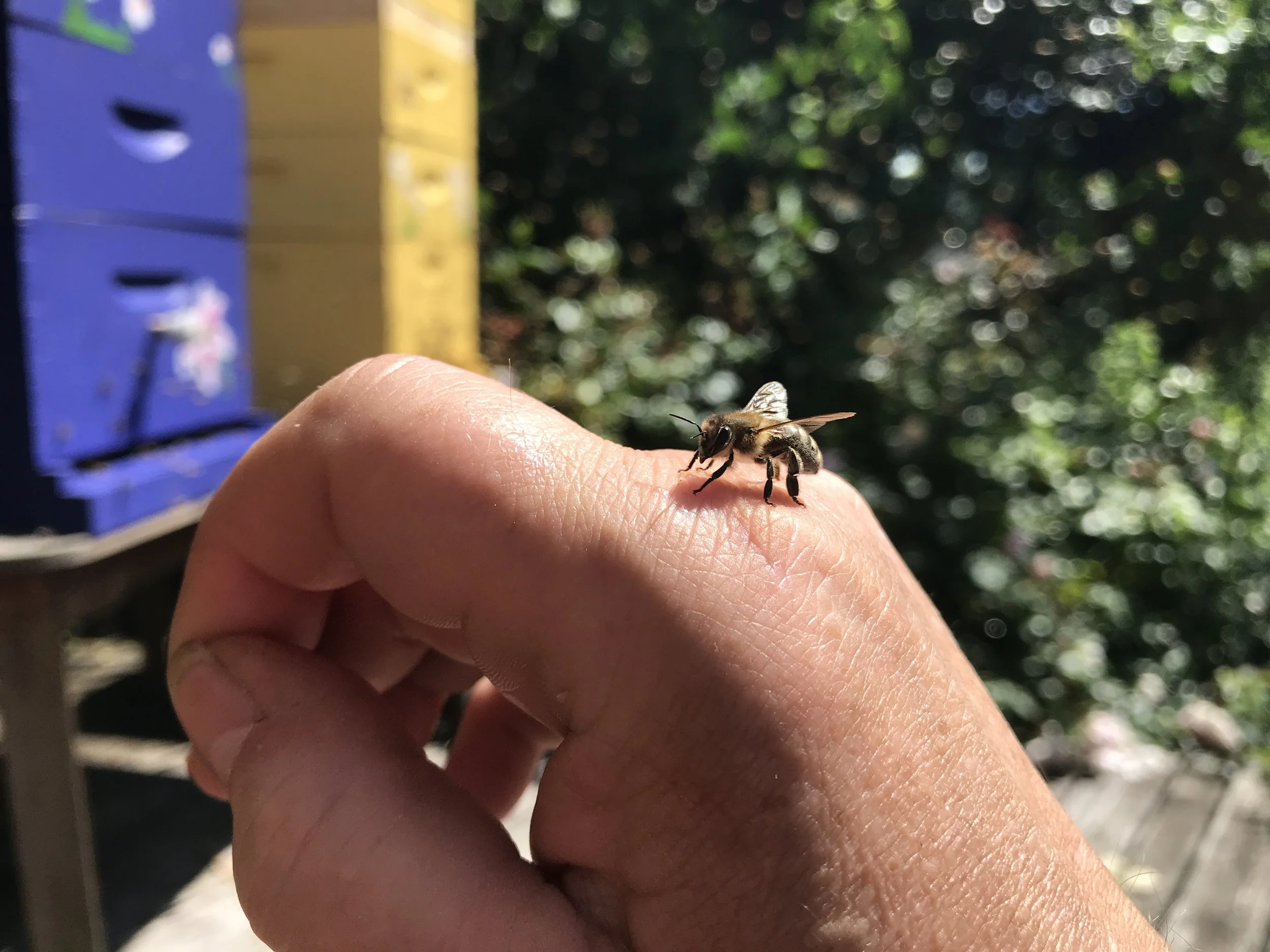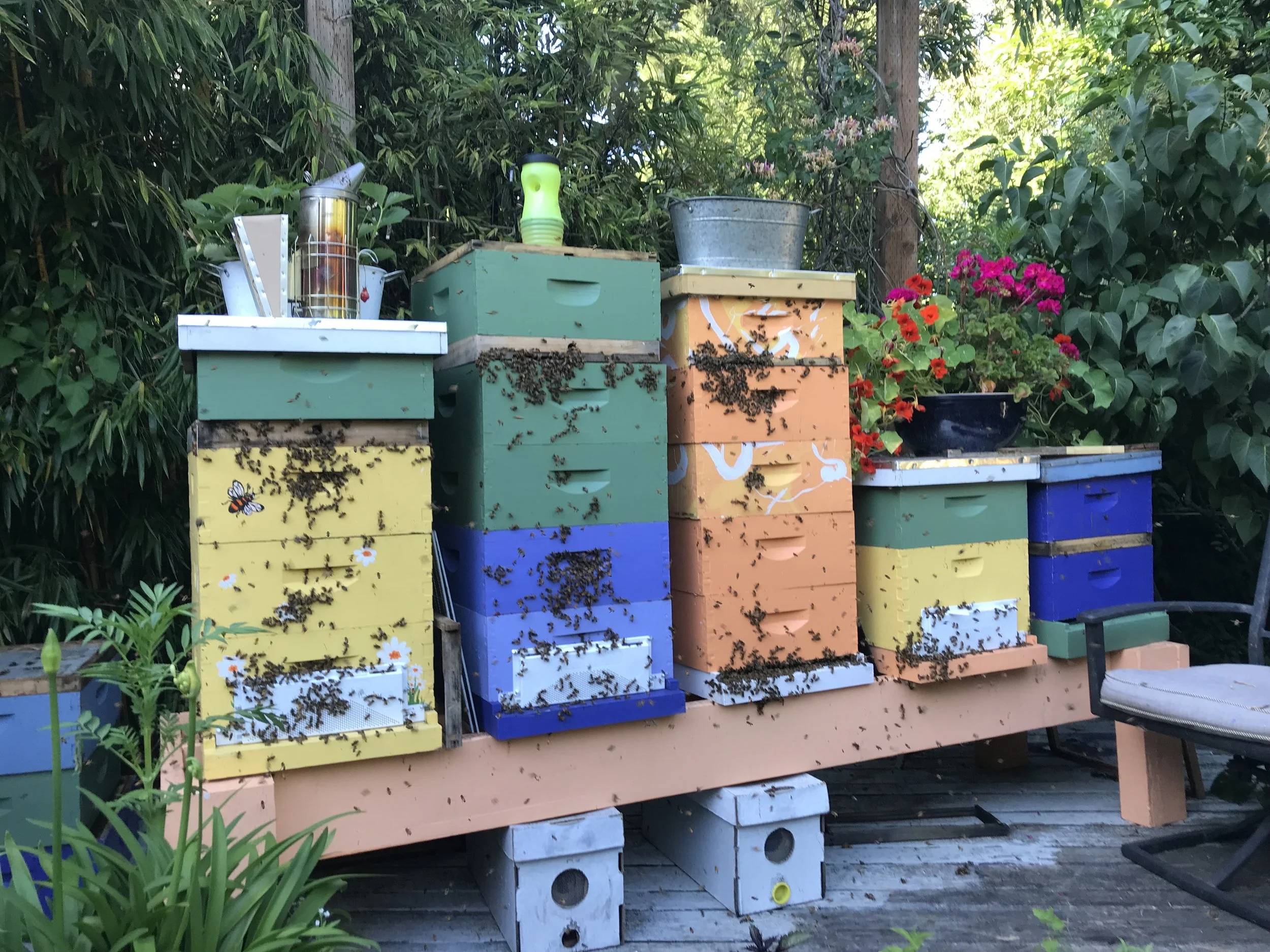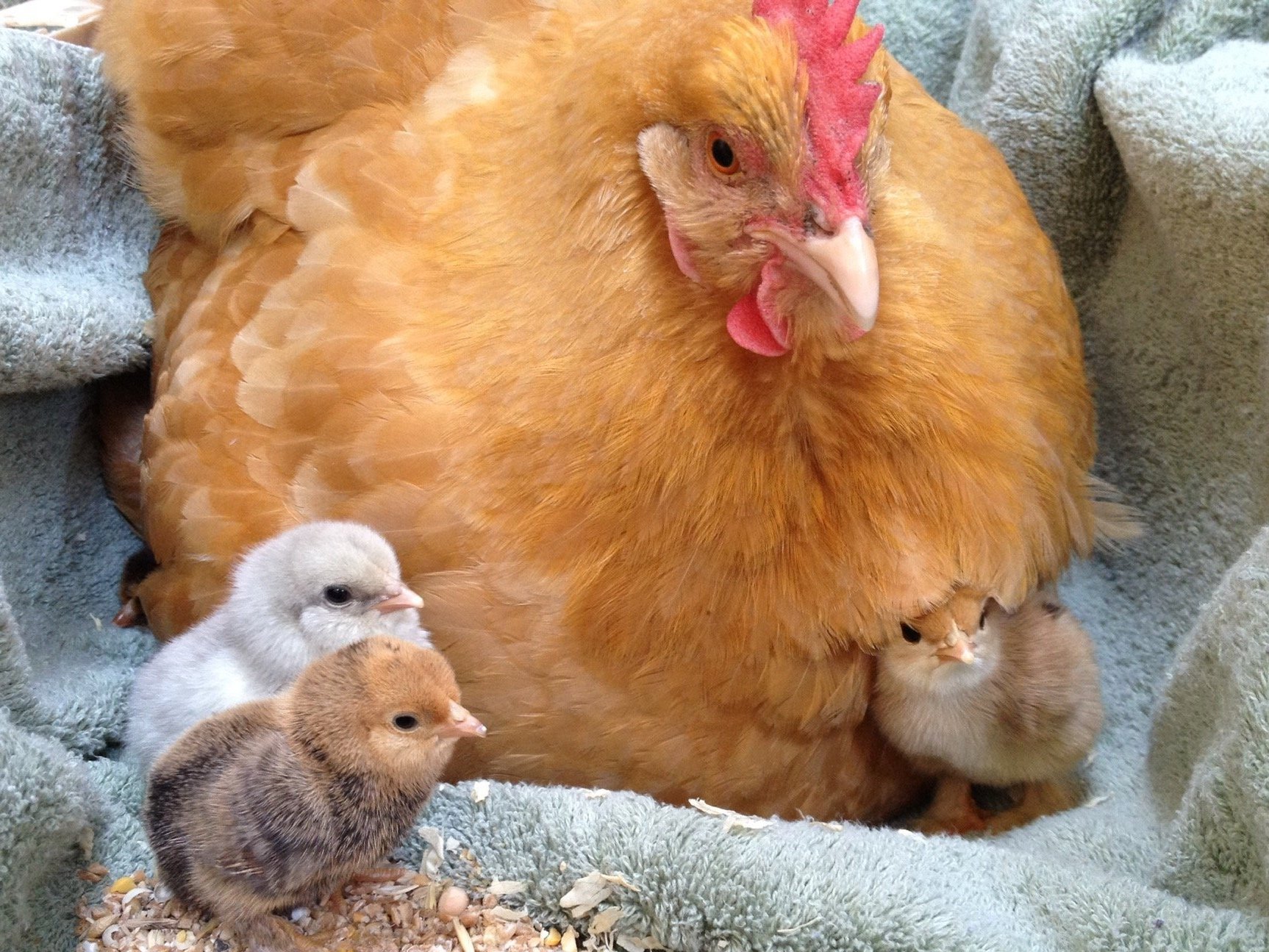
About Crown Hill Farmette
The Backyard Farmette
My friend Jen first coined the term Farmette for me. Hers is a farm of several acres in rural Minnesota, while mine is simply the front and backyard of a modest plot in Seattle’s Crown Hill neighborhood. Hence not a farm but a farmette! Tiny in comparison — but it comes complete with chickens, beehives, an orchard, a kitchen potager, and plenty of heart.
What began as a small interest in roses and herbs soon turned into a full transformation of our lawns into an edible garden. Before long, I was growing fruits, vegetables, herbs, and heirloom flowers for cutting. Several kinds of berries, grapes, and both pomme and stone fruits from dwarf trees now keep us in desserts, snacks, juices, syrups, and cider throughout the year.
Every summer, I impatiently await the start of tomato season. I grow several varieties, but the Sun Gold cherry tomatoes are the true stars of the table — bright orange jewels that shine over pasta with a drizzle of EVOO, balsamic vinegar, garlic, and fresh basil.
When it came time to build a chicken coop, things took an unexpected turn. With all the books on coop design checked out at the library, I borrowed one on house building instead. The result? A true chicken cottage — fully wired, insulated, and outfitted with double-hung windows to let in the light. What was meant to be a simple shelter turned into a miniature home that’s cozier and brighter than my own kitchen. Lucky chickens!
Speaking of chickens, I raise mine indoors at first — in the bathroom, no less — with plenty of cuddles until they’re old enough to live outside year-round. It makes for very tame, affectionate ladies who start laying at about six to eight months of age. I keep a variety of old-fashioned, dual-purpose breeds, chosen for their gentle temperaments — and, I admit, for the color of their eggs. My personal favorites are the small Barbu D’Uccle hens, the sweetest and most social birds imaginable. They’ve even been known to hop through the bedroom window to snuggle on lazy weekends or lay their eggs in an abandoned cat bed in the kitchen.
Could I tell you stories…
While visiting Jen’s farm taught me how delightful chickens can be (and that peacock droppings can strip the paint off your car if you’re not quick with a hose), my inspiration for beekeeping came from my Grandpa Johann. I never met him — he passed before I was born — but my dad and uncle often shared stories of his adventures as a teacher, principal, and beekeeper.
My favorite tale was how, as mischievous boys, they once sealed the hive entrance with mud just to see what would happen. The bees, of course, were not amused. They made such a commotion that someone ran into Grandpa’s classroom shouting that his bees were swarming. Having had a swarm land in my own backyard one spring afternoon, I can attest — it sounds like a 747 has just landed. When Grandpa Johann rushed out of class to deal with the “swarming” hive, he found it roaring with angry, trapped bees. That night, both my dad and uncle had to sit on pillows at dinner — a well-earned consequence for such a prank.
Years later, my friend David — whose veterinarian I was before retiring early for health reasons — rekindled that family spark. He taught me how to manage hives and keep bees happy and thriving.
And (you can laugh) I actually started beekeeping without ever liking honey. Beyond a sweetener for tea, I never saw the appeal. What fascinated me were the bees themselves — their rhythm, their teamwork, and the gift of beeswax they leave behind after pollinating the neighborhood. But that changed the day I tasted David’s raw, beekeeper’s honey. Rich, warm, and aromatic — without the chemical aftertaste I’d always associated with it — it was a revelation. I was instantly converted. Yum.
From Veterinarian to Beekeeper

“Caring for animals — whether pets, chickens, or bees — has always come naturally to me. After a fulfilling career in veterinary medicine, I found peace and purpose in growing food, tending bees, and living simply. The Backyard Farmette is a celebration of that journey: a small space where nature, nurture, and creativity meet in harmony.”
— Anna Kihara



